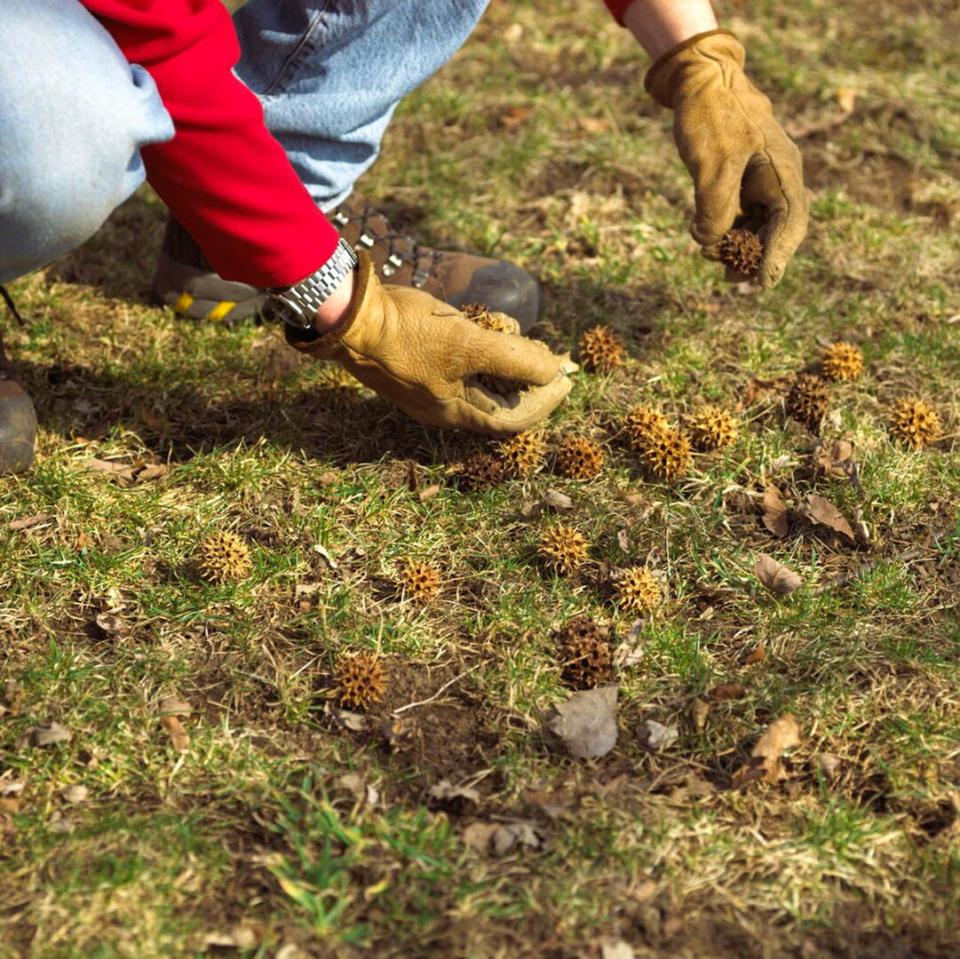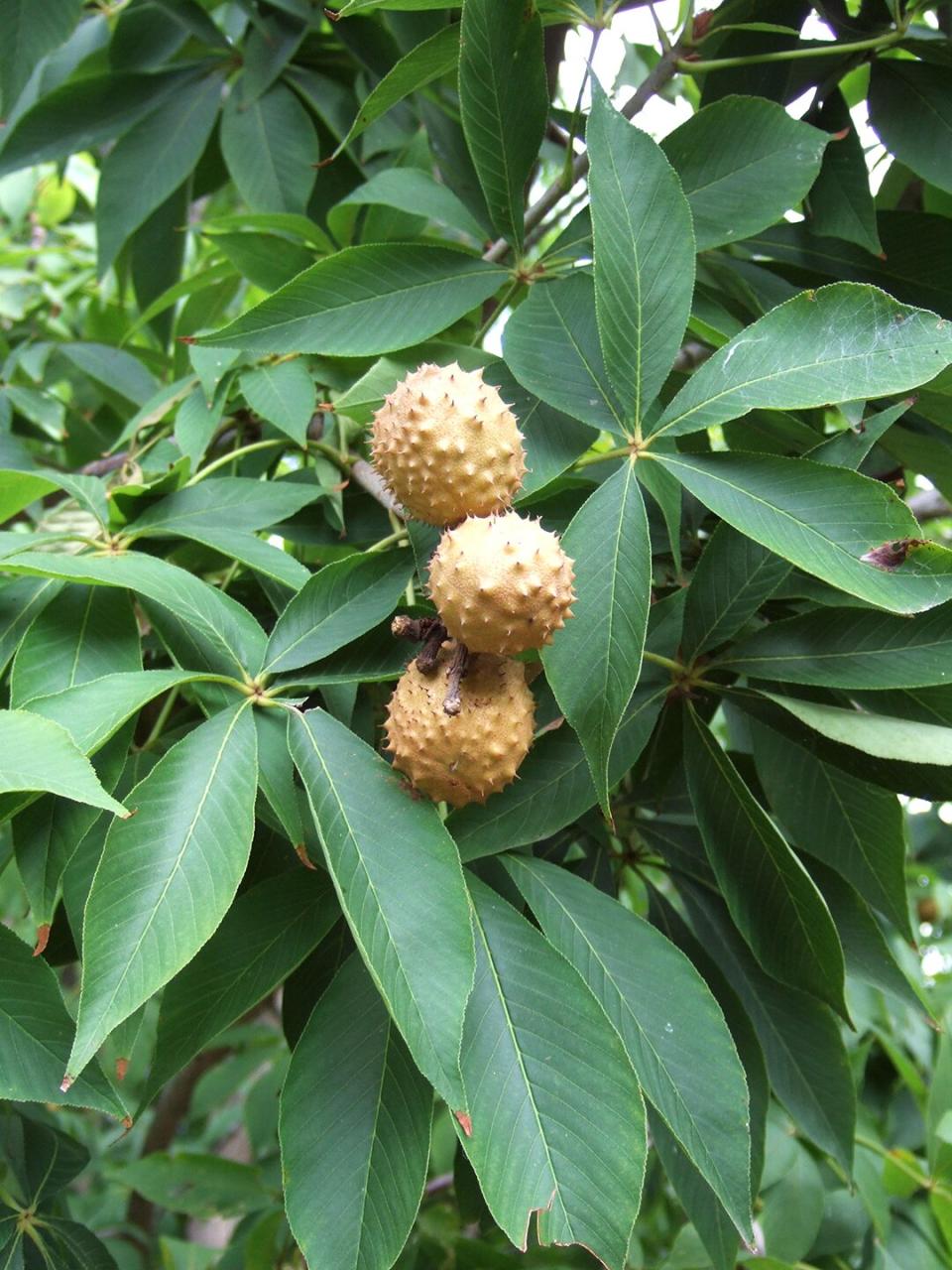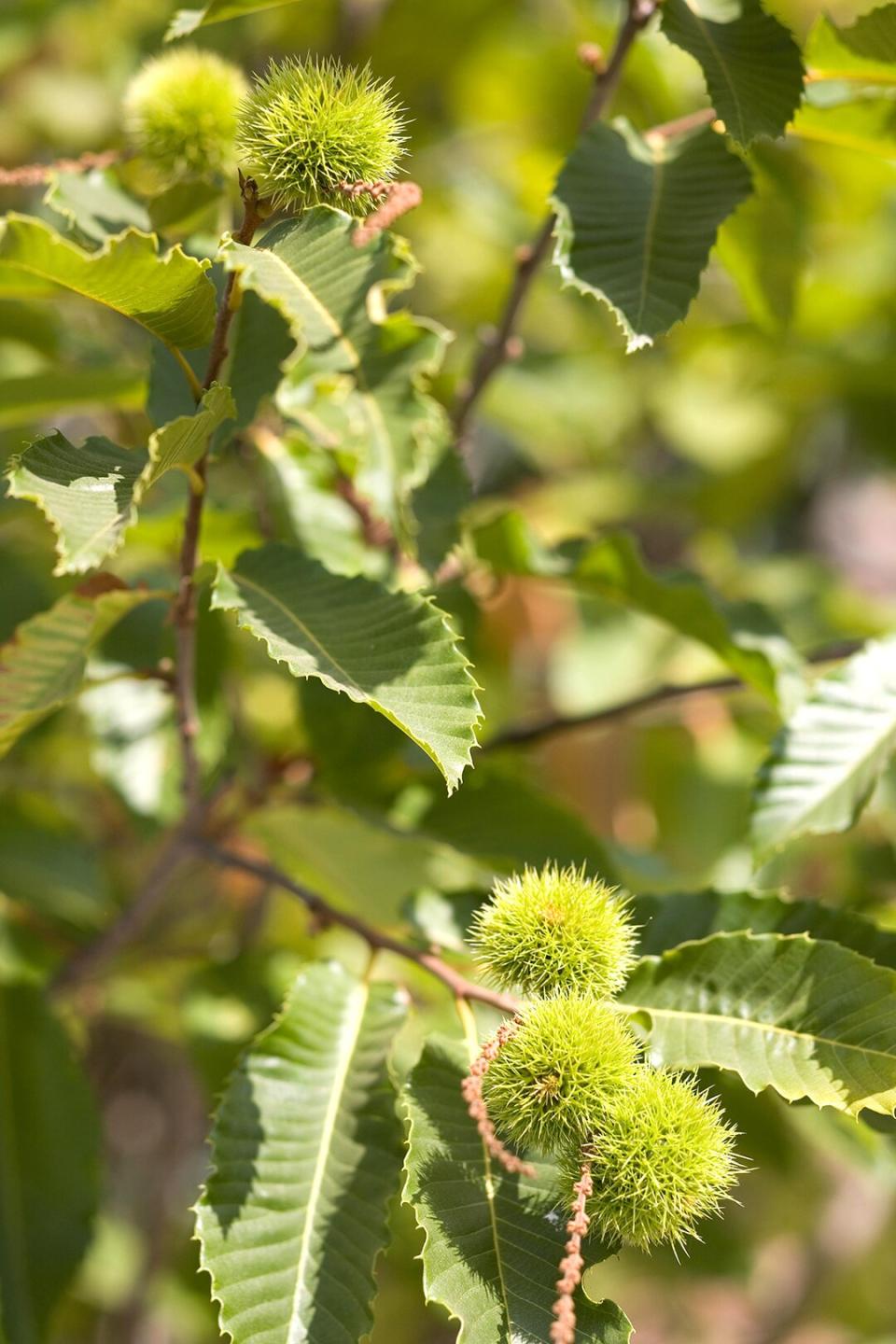Which Trees Produce Spiky Round Balls? Here's How to Identify Them

You don't have to be a trained arborist to notice that certain trees have unique traits that can help you identify them. Spiky, round seed pods are one giveaway when you're trying to figure out which types of established trees you have in your yard or that you come across in a park. These distinctive fruits can help narrow down the plant you're curious about because there are only a handful of spiky trees that make these spherical, prickly pods. While they can make it painful to walk around the yard barefoot, the good news is that the pods are only around at certain times of the year. Here's a look at which plants could be producing spiked, round balls that almost look like something from another planet.

Jay Wilde
Trees with Spiky Seed Pods
If you've encountered some round, spiny balls under a tree or maybe still on the plant, and you're wondering what it could be, it's likely one of several options: buckeye/horsechestnut (Aesculus), chestnut (Castanea), or sweet gum (Liquidambar styraciflua). All are common landscape trees and produce spiky pods around their seeds. The spines help protect the seeds from being eaten by critters like birds and squirrels. Here's what each of the pods looks like.

Denny Schrock
Buckeye
Ohio buckeye (Aesculus glabra) is usually a small to medium-size tree (20-40 feet tall) with compound leaves that have five oval-shaped leaflets. Closely related is the common horsechestnut (A. hippocastanum). It is 50-75 feet tall and usually has seven leaflets rather than five. Ohio buckeye turns orange-red to reddish-brown in fall; horsechestnuts turn yellow or brown. Both bear showy flowers in spring, which are followed by prickly or spiny capsules that split open in fall to release 1 or 2 nuts inside. Unlike actual chestnuts, the nuts of Aesculus species are poisonous to people if eaten.

Ed Gohlich
Chestnut
American chestnut (Castanea dentata) are trees with green balls and used to be one of the most widespread native trees in North America, but a fungus blight wiped out most of them. Chinese chestnut (C. mollissima) or hybrids between the two species are more likely to be found nowadays. The leaves are oval-shaped with serrated edges. Fall color is yellow or bronze. The green ball-shaped fruits appear in early summer and remain on the tree until fall. The burs split open when ripe, revealing 1 to 4 edible nuts inside.

Dean Schoeppner
Sweet Gum
Sweet gum is a native shade tree that has glossy green leaves with five lobes, similar to a sugar maple. Fall color can be quite dramatic, with a combination of yellows, reds, and purples. The tree produces spiky green fruits about the size of a golf ball, which turn brown and drop off the tree over an extended period beginning in fall and continuing over the winter. The spiny fruit may be used in craft projects or as mulch to deter rabbits in the garden. If you've stepped on one barefoot, you know how uncomfortable it can be, plus they can make it difficult to mow when they are all over a lawn.

